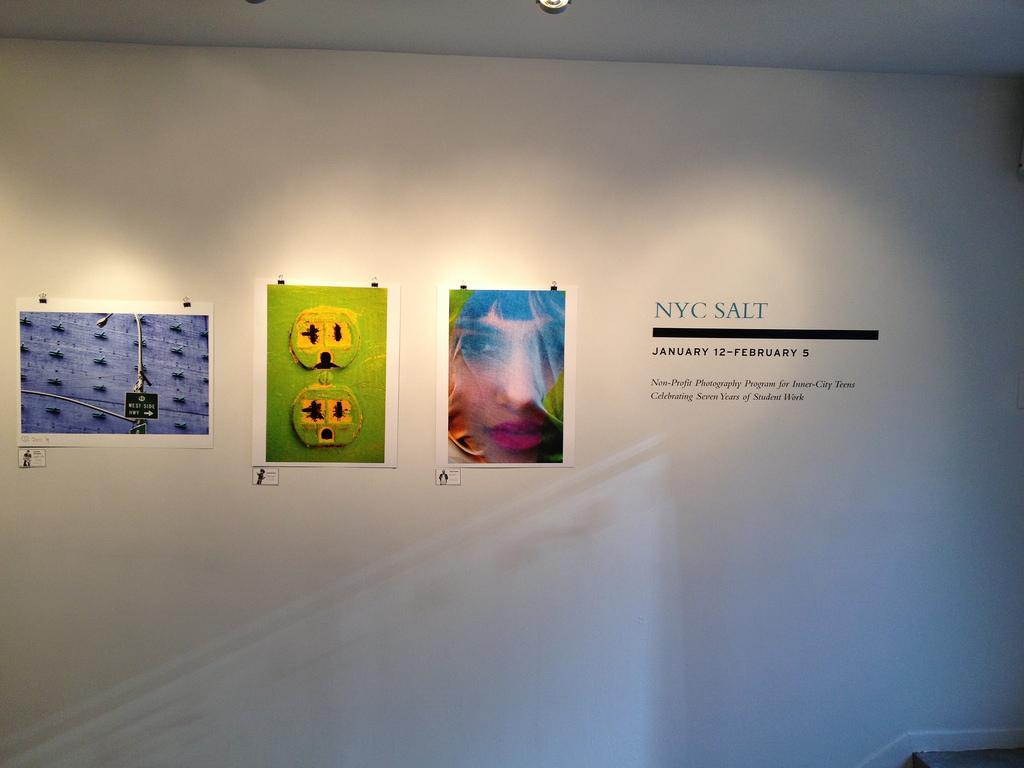SALT of the City: Iconic New York on Display Underground
February 3, 2012

Underline Gallery, located a few steps beneath West 14th Street, is currently exhibiting the photography of NYC SALT, a nonprofit after-school program that provides New York City teenagers with professional photography instruction and equipment.
The show includes work from every student in the organization’s seven-year history, some of whom have gone on to prestigious art colleges like Savannah College of Art and Design, Syracuse University and the School of Visual Arts, and others who are still in high school.
“These photographs represent each student’s strongest work,” Alicia Hansen, founder and executive director of NYC SALT, said, “and the work that has, at previous exhibitions, sold the best.” 85 percent of the exhibition revenue goes to NYC SALT, and 15 percent goes to the gallery.
Casey Burry, gallery director, understands how important sales are to a nonprofit like NYC SALT, whose print sales constitute a quarter of their total revenue, and without which they could not exist. “This being 14th Street,” Burry said, “we get a lot of tourists. They want to remember their trip through iconic imagery—skyscrapers, skylines—the images that stand for New York.” These tourists (and anyone else) can buy prints for $50, $100 and $200.
And they’d be getting more than they bargained for. While many of the photographs, particularly those at the front of the gallery, are prototypical New York images (a rooftop water tower, the red neon sign of the New Yorker Hotel), most display a less advertised, but no less real, side of the city.
Such subject matter is the result of NYC SALT’s curriculum. Each year, students are tasked with photographing a particular neighborhood or area (this year, for instance, focuses on the High Line). Though the location remains constant, students must approach the scene with a new artistic technique or theme each week.
“Clutter” was one such theme, and resulted in “Grandma’s Room” by Kedwien Valdez, Fordham College at Lincoln Center (FCLC) ’15. Valdez captures one corner of a room that includes an ironing board heaped with wrinkled clothing and a side table crammed with candles and pictures of the Virgin Mary. No living people appear. “I wanted to portray my grandmother without showing her,” Valdez said. The invisible subject emerges through the physical icons of her environment.
Much like New York.









